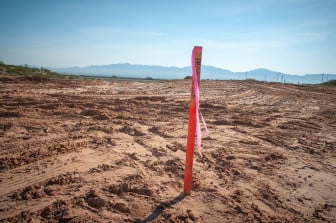
Ground has been cleared in Santa Teresa for a new water treatment plant to be operated by the Camino Real Regional Utility Authority. Jett Loe/Las Cruces Sun-News
Hundreds of thousands of dollars for a Shiprock shelter for women and children left unspent.
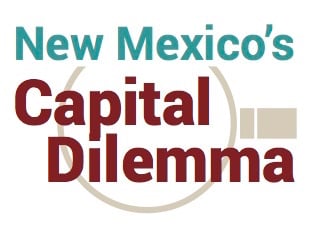 Nearly $7 million in state money spent on the Cabresto Dam in Taos County over a decade, with another $500,000 allocated to try to fix leaks after it was found the structure does not hold water.
Nearly $7 million in state money spent on the Cabresto Dam in Taos County over a decade, with another $500,000 allocated to try to fix leaks after it was found the structure does not hold water.
Some $350,000 budgeted to fix wastewater systems in the Cebolleta Land Grant. But the small community can’t spend the money until it can conduct a successful financial audit.
New Mexico lawmakers appropriated more than $1.1 billion for more than 2,800 capital outlay projects from 2010 through 2014. But less than half the money has been spent, according to an analysis of those projects by New Mexico In Depth.
The capital outlay bill is one of the top priorities of each legislative session because it pays for hundreds of state and local projects across New Mexico, including everything from new and renovated buildings to dam renovation and road maintenance.
But many critics, including scholars who study how U.S. states pay for brick-and-mortar projects, say New Mexico’s politicized process for selecting local projects is flawed.
One weakness the NMID analysis discovered is once New Mexico authorizes money, oversight to ensure the dollars are spent efficiently appears to be lacking.
Nearly 30 percent of the $1.1 billion authorized from 2010 to 2014 went to more than 2,500 projects valued at less than $1 million, according to New Mexico In Depth’s analysis. That threshold is important because staff at the Legislative Finance Committee, the Legislature’s budget arm, alerts lawmakers about projects valued at $1 million or more that aren’t progressing. About $337 million going to these smaller projects fell under the $1 million threshold, meaning they escaped LFC scrutiny.
About 56 percent of that nearly $337 million remains unspent, according to NMID’s analysis, although spending appears to increase as deadlines approach.
“There are a lot of local projects that make it into the bill that just aren’t ready, won’t be ready, aren’t planned, aren’t coordinated,” Scott Darnell, deputy chief of staff for Republican Gov. Susana Martinez, said of the capital outlay spending the Legislature passes each year. “It’s money that is, in a sense, unusable.”
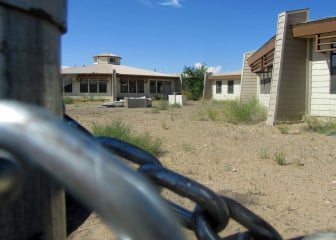
The Home for Women and Children in Shiprock is seen through a locked gate on Thursday. The gate around the unopened domestic violence shelter is lined with barbed wire, and sections are tagged with graffiti. Dan Schwartz/The Daily Times
Some projects are unfinished years after receiving state funding. Projects such as the Shiprock Home for Women and Children never get off the ground. Since 2010, the Legislature has made nine appropriations ranging from $45,000 to $600,000, often renewing the money when it wasn’t spent.
While state records indicate that $199,000 was spent on the shelter before 2010, neither state nor shelter officials could explain what the money was spent on or why the rest of the money went unspent, according to The Daily Times of Farmington. All of the unspent money was returned to the state.
At the other end of the state, in the impoverished area of southern Doña Ana County, which borders Mexico, efforts have been underway for years to improve basic infrastructure. But despite 15 capital outlay appropriations totaling more than $11.5 million since 2011 targeted at water and wastewater systems in the region, more than $10 million remains unspent.
Meanwhile, in Taos County in northern New Mexico, legislative staffers reported in December 2014 that despite nearly $7 million spent on the Cabresto Dam since 2006, the dam still leaks water. According to the report, the project took longer than expected, was over budget and spending records were missing from files at the State Engineer’s Office.
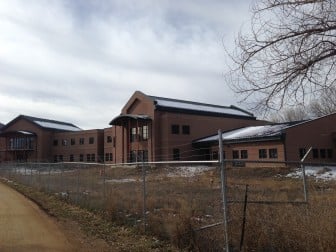
Sandra Fish / New Mexico In Depth
Mora County\’s new two-story courthouse sits unfinished behind a chainlink fence. It\’s often cited as an example of the flaws in the state\’s capital funding process. Sandra Fish/New Mexico In Depth
In fact, one doesn’t have to search hard to find state-funded projects across New Mexico that are unfinished. In Mora County, between and east of Santa Fe and Taos, a multi-million-dollar courthouse sits unfinished because local officials are hoping for more money from the state to pay for the over-budget project.
New Mexico In Depth is analyzing capital outlay projects approved by the Legislature from 2010 through 2014 with partner news organizations over the next several months in an effort to document in greater detail how New Mexico funds brick-and-mortar projects.
To give New Mexicans more information about the capital outlay process, New Mexico In Depth created a website listing every project the Legislature appropriated money for since 2010.
National experts say New Mexico’s process of selecting such projects is unusual. Most states have a ranking system similar to that used for New Mexico’s public education capital funding. But funding for local projects doesn’t have such a systematic approach.
Critics point to the large amount of public money that goes unspent as a result of the way New Mexico pays for brick-and-mortar and other projects across the state.
Democratic State Auditor Tim Keller has criticized the program for having up to $1.5 billion in unspent balances. Tom Clifford, Martinez’s secretary of the Department of Finance and Administration, and others, however, have said the balances aren’t nearly as high as Keller said.
The disagreement over how much money remains unspent points to another weakness in the process New Mexico uses to pay for brick-and-mortar projects: the lack of oversight to ensure timely reporting, which is one way to encourage more accurate tracking of spending.
“There’s a disagreement on how much money is still dangling out there,” said Sen. John Arthur Smith, D-Deming, chairman of the Legislative Finance Committee. “That might be a reporting issue where local governments have failed to communicate, where they’ve already spent that money.”
An overview
Spending for capital projects in New Mexico is a highly political process.
Lawmakers and experts say New Mexico is the only state in the nation to use what critics call earmarking or “pork barrel” politics to select projects to fund. In everyday language, individual lawmakers get a cut of the money the state spends each year to propose capital projects they want funded.
For example, in this year’s special session, legislators earmarked $84 million of the $294 million available. That means each senator in the 42-member state Senate received $1 million to propose funding for projects; and each representative in the 70-member state House of Representatives received $600,000.
Here’s a look at legislative earmarks from 2012-2014:
The projects are funded by 10-year bonds sold based on severance tax revenues every year and with voter approval required for general obligation bonds in general election years. The severance tax on oil and gas extracted from New Mexico lands is used for capital projects annually.
When money isn’t spent within a given time period, lawmakers often reauthorize projects, allowing extra time to sell bonds and spend the money. Agencies typically have two years to certify projects for bond sales, two years to spend money for vehicles, equipment and furniture and four years to spend money on construction projects, Clifford said.
Here’s a look at the amounts budgeted and spent from 2010 through 2014, based on analysis of data the Department of Finance and Administration:
The closer projects come to the spending deadline, the more likely the money is to be spent. For instance, 77 percent of the $135 million in funding set to expire on June 30, 2014, was spent or returned to the state.
In Grant County, officials bought a Ford F-150 in June 2014 after realizing there was money left from $120,000 to buy vehicles for senior centers, according to the DFA data. Senior Service Director Terry Trujillo said the pickup includes heating and cooling equipment to deliver Meals on Wheels. The county also returned $1,669 to the state.
Some funded projects never get built because of lack of oversight or lack of communication,
The city of Albuquerque was to receive $100,000 for traffic lights at La Paz Drive and Paradise Boulevard under a 2011 appropriation. But the money was never spent because the intersection didn’t meet the city’s requirements for traffic signals, a city spokeswoman wrote in an email.
Cibola County returned $40,000 in 2014 that was budgeted in 2010 for an irrigation reservoir for Seboyeta, while Mora County returned $10,000 intended for a pipeline.
And through late June, only 52 percent of the $7.4 million for 22 projects set to expire June 30 this year had been spent or returned to the state. That’s according to the Department of Finance and Administration’s database as of June 23.
When money isn’t spent and a project isn’t reauthorized, the cash is returned to the severance tax fund to pay off the bonds.
There are plenty of defenders of the current system who say it helps communities around New Mexico, one of the poorest states in the nation, including some whose criticism focuses on how the money is parceled out. They say the money helps communities without the financial wherewithal to pay for such projects themselves.
And they can point to successes.
Clifford, Smith, and Sen. Carlos Cisneros, D-Questa, cite the Paseo Del Norte interchange on Interstate 25 in north Albuquerque as an example where the state pooled nearly $30 million in capital outlay money with federal dollars and state transportation funds to complete a large project.
“There’s plenty of good expenditures, no doubt about it,” Cisneros said. “Ninety-five percent of all the projects essentially are viable projects and good projects and turn out well.”
Money for such projects is essential for the 88 New Mexico cities with populations under 10,000, said William Fulginiti, executive director of the New Mexico Municipal League.
For example, Ruidoso, with a population of about 8,000, received and spent $452,000 in capital outlay money from 2012 to 2014 for improvements to the city sewer system.
“Their tax bases alone are not going to be enough to do the kind of capital outlay projects that are necessary,” he said. “The state participation is essential in a lot of those cases.”
The little projects
An additional weakness in New Mexico’s system for paying for projects is the lack of required planning at all governmental levels.
New Mexico has safeguards in place for state projects, including planning procedures requiring state agencies to file five-year plans and priorities for capital spending. But such long-term planning is optional for local governments.
Compounding matters are lawmakers who suggest projects that don’t meet the Legislature’s own rules for best practices.
Smith said legislative rules require projects to be at least $50,000. Yet each session individual lawmakers offer up a host of projects on behalf of constituents. Some of those projects are for relatively small amounts, such as $500 for equipment at a senior center.
“We don’t always ask for stuff we get,” Fulginiti of the Municipal League said. “We sometimes are the last to know” about appropriations included in the capital outlay bill.
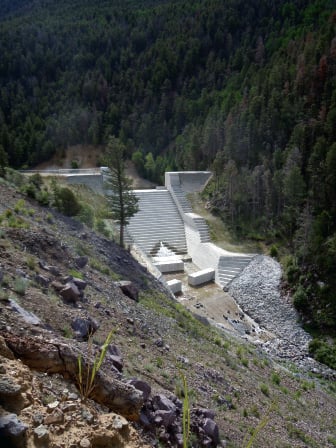
A decade-long rehabilitation of the Cabresto Lake Dam, pictured, has cost $6.7 million so far, but the lake still seeps water. J.R. Logan/The Taos News.
In recent years, legislative leaders have typically negotiated a capital outlay bill behind closed doors after recommendations from legislative staff and the executive branch. They agree on state agency projects, then set an amount to be divvied up among lawmakers, as they did during this year’s special session.
It’s unclear which lawmakers allocate exactly how much to specific projects. But it’s safe to say many of the projects of less than $1 million are put into capital outlay bills by individual legislators.
“The bottom line is, we’ve got a lot off earmarked stuff,” Smith said.
That’s one of the problems behind some of the unspent money, many say.
“They can’t use that money because it’s not enough to start and finish a project,” Cisneros said.
The controversies
Capital outlay projects periodically come under scrutiny when things don’t work out.
For instance, in 2011, the National Hispanic Cultural Center in Albuquerque was forced to return money allocated in 2007 and 2008 meant for a fresco that was instead used to pay for staff salaries. The center has been allocated more than $1 million for projects between 2010 and 2014.
The Mora County Courthouse is still unoccupied after millions in state and local money spent to build it, and a critical 2012 state audit. Nearly $2 million in capital outlay money was included in 2013 and 2014, but Martinez vetoed $1.8 million from the general fund for the project this spring.
Last year, the city of Albuquerque demolished a warehouse purchased with capital outlay money in the late 2000s. The building was to house a nonprofit dance studio, but was too run-down to be used.
Reform efforts
For several years, legislators have proposed reforms to how New Mexico pays for capital outlay. Cisneros and Sen. Pete Campos, D-Las Vegas, have sponsored bills aimed at reforming the capital outlay process. They’ve advocated stronger planning, prioritizing local projects and various other ideas.
All those efforts have failed.
“It’s the Legislature that’s going to have to adopt those,” Darnell said.
But Cisneros says Martinez and the executive branch can improve, too. He would like to see more oversight at the state level.
“One of the biggest complaints I have is that no one oversees the project once it’s evolving,” Cisneros said. “The contractor goes in, does the building and at the end of the day, it doesn’t fix the problem.”
Clifford said a 2013 executive order requires local governments to be in good financial standing. Since then, $972,000 in funding for 15 projects has been withheld because of inadequate audits, according to the DFA database, including the $350,000 in wastewater system improvements for the Cebolleta Land Grant, a small community of about 400 west of Albuquerque. The community, which became a political subdivision in 2004, hopes to finish the audit process and qualify for the bonds in the fall, said William Hocker, president of the board of trustees.
Once bonds are sold, various state agencies monitor spending by local governments, with money doled out on a reimbursement basis, Clifford said. And city or county government audits should catch any issues with spending state money.
“The independent auditors of the local governments should be looking at these things,” Clifford said. “My staff reviews them every year to make sure there’s compliance with the executive order.”
There are signs that some headway is being made. Last month, Legislative Finance Committee staff met with city and county representatives to discuss better tracking of local projects.
“We’re going to try to help LFC by contacting cities who have had the money for a little bit of time,” said Fulginiti of the Municipal League.
Clifford, meanwhile, has advocated upgrading DFA’s capital outlay bureau to a division, with more staff and oversight authority, as well as stronger planning requirements. Such improvements take legislative approval.
“There is so much promise for what this funding could accomplish for cities, counties, regions of our state, that is not being fulfilled,” said Darnell, Martinez’s deputy chief of staff. “And it’s not being fulfilled because of a stubborn desire to not prioritize, to not ensure that projects are fully funded, to not coordinate with local entities in the state so we can pool our resources and we can accomplish big projects for these communities.”
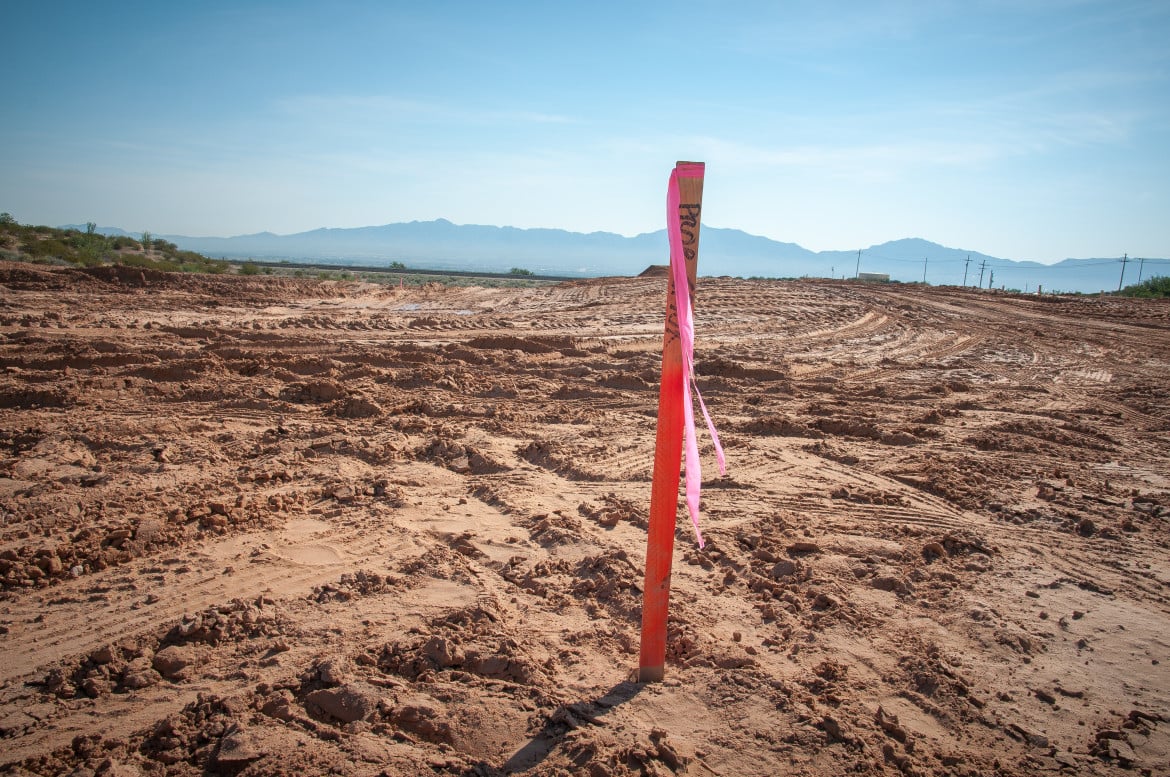
It is a travesty that the capital outlay system in this state is so bad. Think of the “ripple effects” of putting even $500 million to work statewide. This provocative series brings out the reality behind the political nature of our capital spending process.
However, our State’s capital funding system is also broken. As the article points out, bonds have been issued for each of these projects. That means that the taxpayer is paying for projects that are not being completed or worked on at all. To me, that is a complete insult being put on the taxpayers by the Governor, Secretary Clifford and the Department of Finance and Administration. If you check the DFA’s own Board of Finance’s website, you will see records of the bond financing documents.
The LFC also tracks capital spending, but the numbers they use are even smaller. It makes me wonder why they narrow their scope instead of looking at the full picture.
According to the State Treasurer’s Website (www.nmsto.gov), as of June 30, the State was sitting on over $1.4 billion in unspent bond proceeds tied to each one of the projects listed in the excellent study. Mssrs Clifford and Smith disagree with that total (which is actually much closer to the number put forth by Auditor Keller), but the numbers are there in black and white, as plain as day. Since June 30th, approximately $210 million in bonds have been sold, adding to the total which is now over $1.6 Billion.
The taxpayers (you and I) are paying for those bonds, even though we aren’t seeing any bit of the benefits.
A solution would be to not compound the problem – change the way that you issue capital debt. Don’t issue another dollar in bonds until we have spent the money that we have already raised. The creation of more bonded debt helps no one but the wall street fat cats. We can’t afford it!
Secondly, issue bonds as we spend money. That will eliminate the overage/underage problem of the specific projects — if a project gets cancelled, we don’t raise money for it — easy.
These two ideas will save the state millions of dollars in debt service on an annual basis – moneys which can be better spent elsewhere.
Thanks — keep up the GREAT work New Mexico In Depth. We cannot afford to have this situation continue.
Lucie